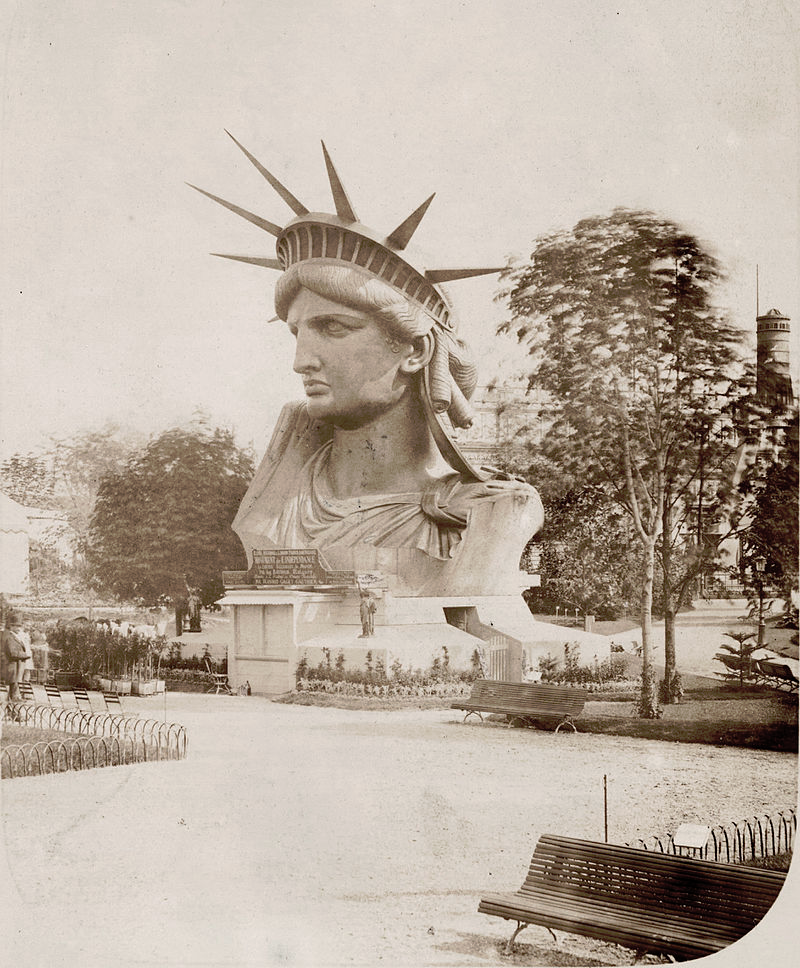by Patrick Sweeney
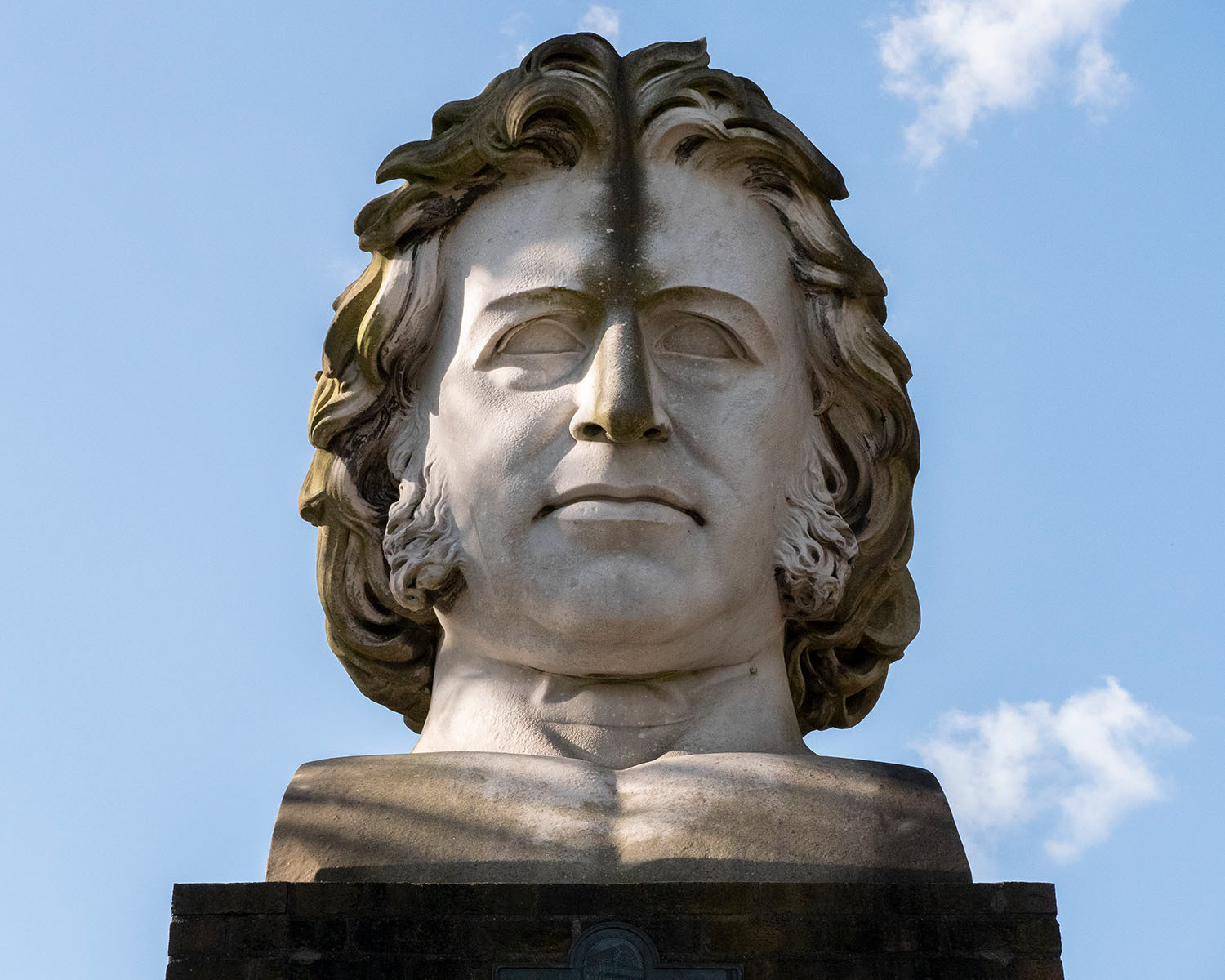
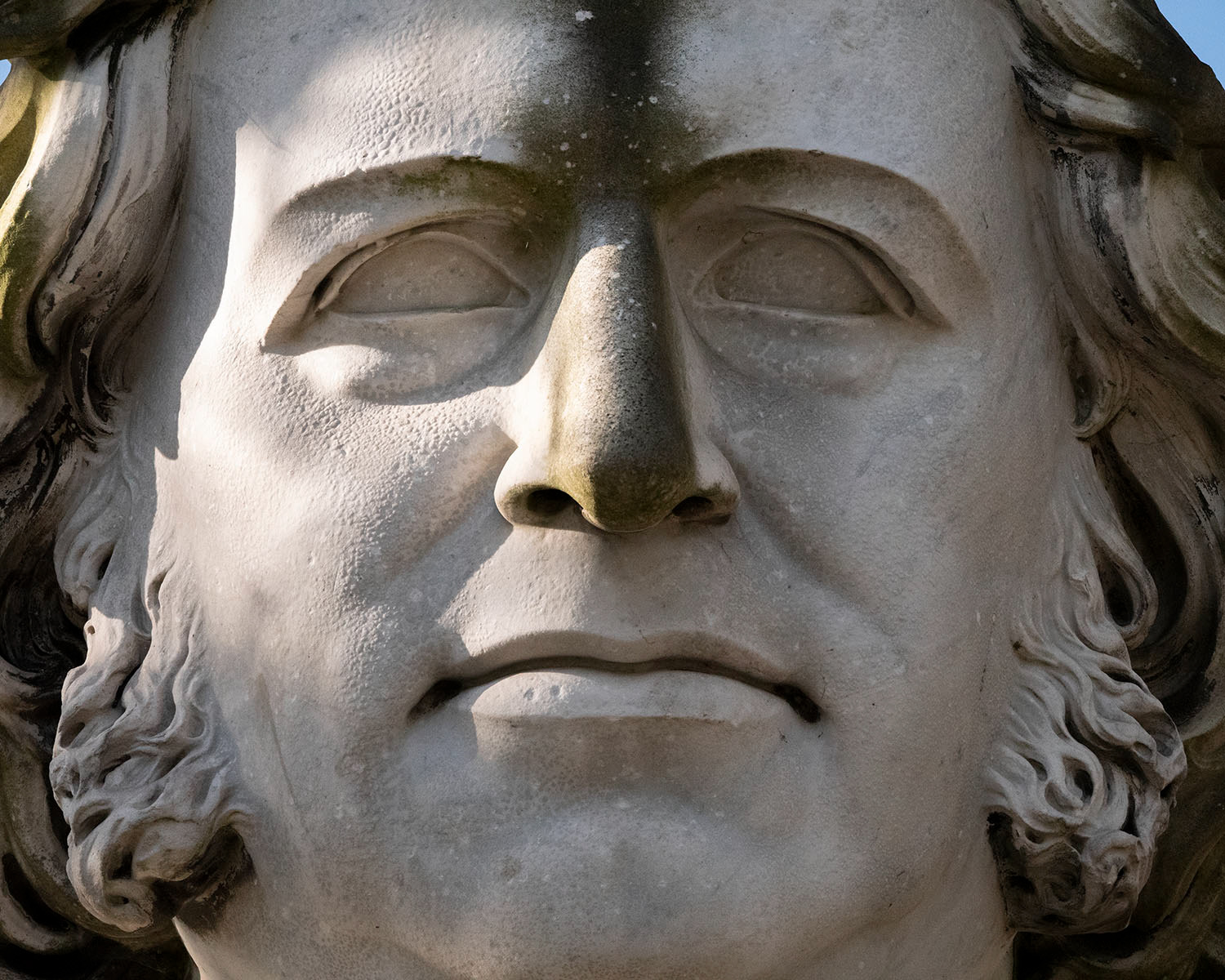
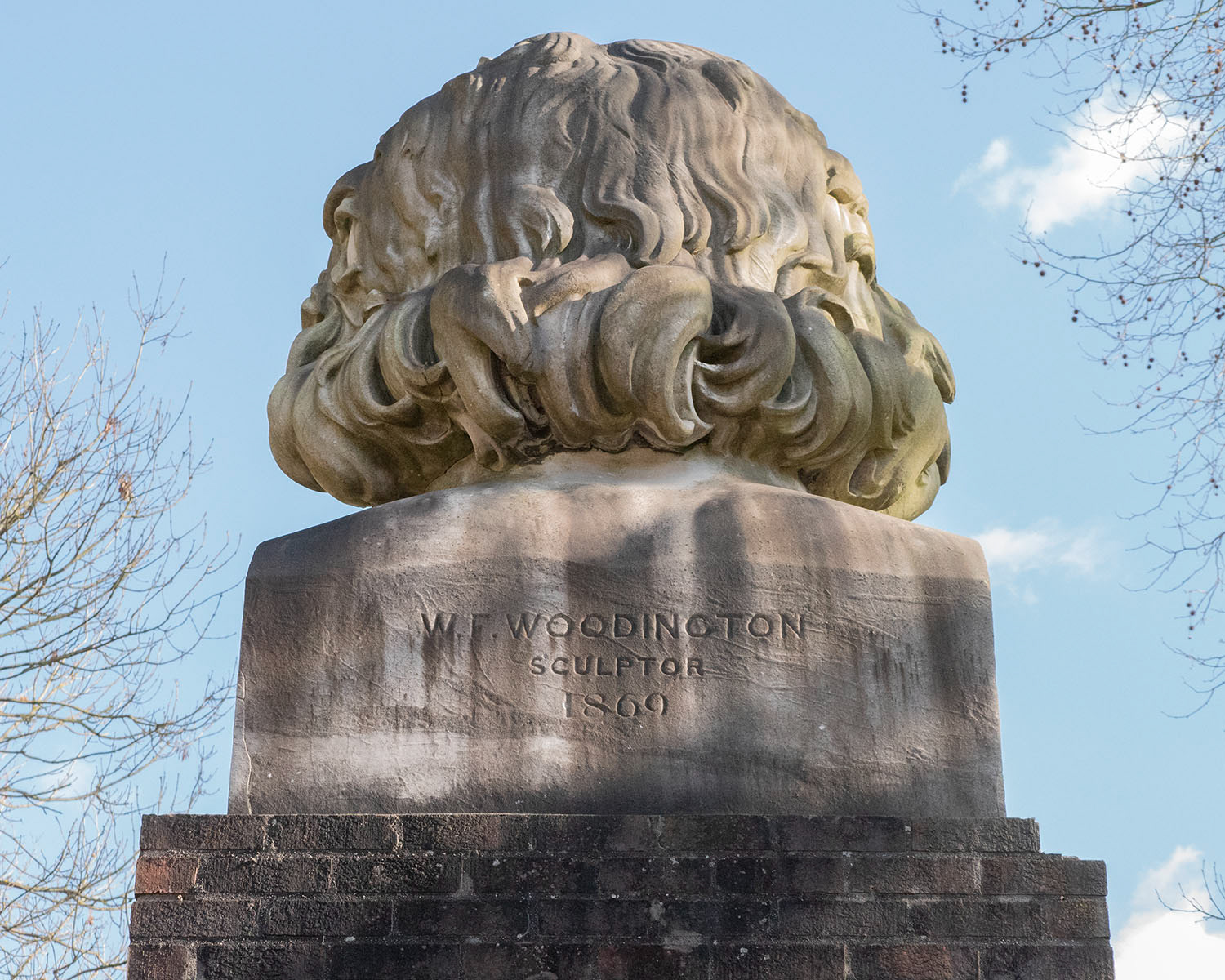
An impressive feature of the sculptures at Crystal Palace is the bust ofthe architectural designer, Joseph Paxton (1803 - 1865). His work was commemorated by a monumental head on a tall plinth, giving status and dignity to his achievement. The bust, created by the sculptor William F. Woodington (1806 - 1893) ultimately derives from the colossal head of the Emperor Constantine in Rome, which set the pattern for the clear, clean lines of an over large statue, making it readable from a distance. The Constantine head is just a fragment of a colossal statue, of which several fragments remain, including head, hand and a foot. The aim wasto inspire awe and amazement in the mind of those who saw it, and during the eighteenth and nineteenth centuries this was seen as something to be emulated because of the way it raised the dignity of the person and idea represented.
Below centre, is a drawing by Henry Fuseli (1741 - 1825) called 'The Artist in Despair at the Grandeur of Ancient Ruins' which shows how hard it is for the artist to grasp the monumental vision of ancient Rome. Art can achieve unimagined heights, and artists should strive to match the classical world. The Paxton head represents a contribution to our understanding of the Victorian mind, as they ask how can we match the grandeur of ancient Rome.
The Paxton statue is distinguished by being more human than the icon-like Constantine, which was simply a symbol of power. The rich, fluid flow of baroque hair and facial expression of Paxton makes more direct contact with our emotions, unlike the frozen, aloof head of, for example, the Statue of Liberty (dedicated in 1886) which, like Constantine, represents an idea, not a person. This suggests the Victorian vision wason the cusp of a new age, a new deeper interpretation of the world theywere trying to represent at Crystal Palace.
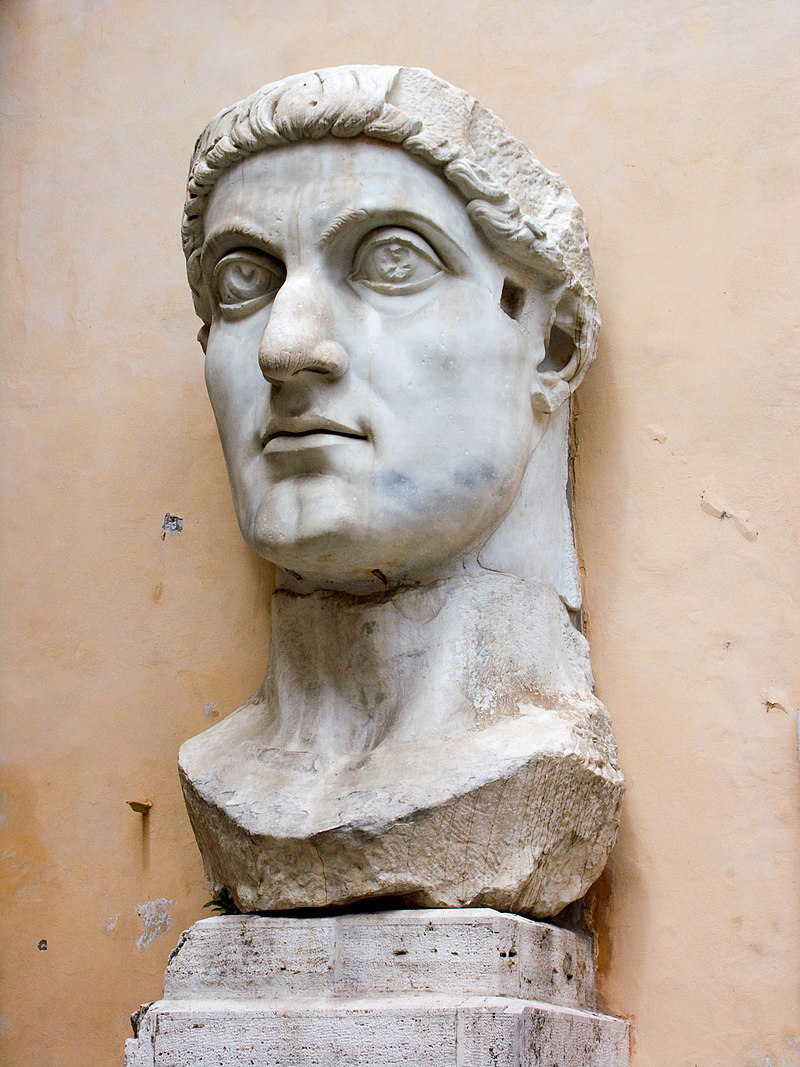
The Emperor Constantine, Capitoline Museum, Rome. Photo I, Jean-Christophe BENOIST
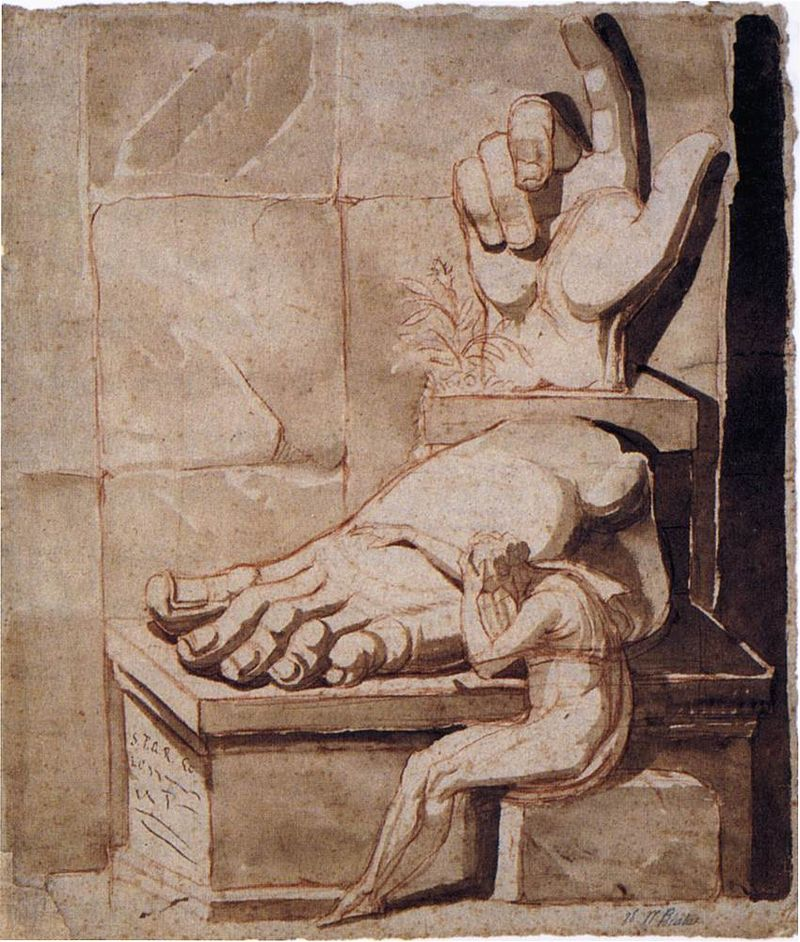
Henry Fuseli: The Artist Moved to Despair at the Grandeur of Ancient Fragments, 1778-79.
